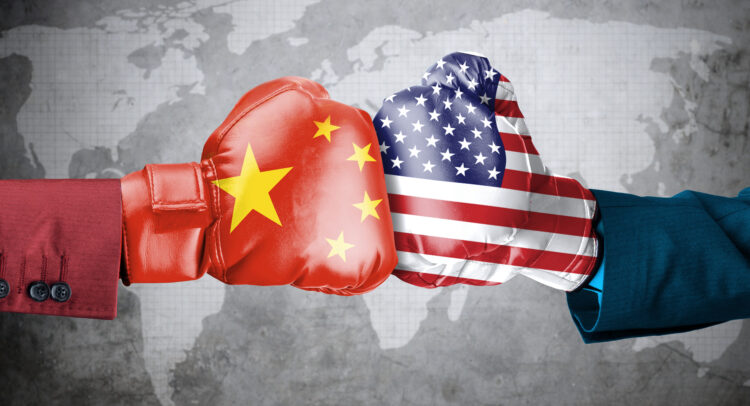China’s decision to raise tariffs on U.S. imports to 125% is the sharpest escalation yet in the trade war—one that could send ripples through global markets, pressure specific U.S. sectors, and strain China’s manufacturing-heavy economy. The fallout is set to hit both economies hard, with knock-on effects likely to unfold over months.
Tit-for-Tat Tariffs Escalate Trade Conflict
Beijing’s finance ministry announced the hike from the previous 84% additional tariff level, effective April 12, in direct response to the latest barrage of levies from U.S. President Donald Trump. In its statement, the ministry didn’t hold back—labeling the U.S. moves as “unilateral bullying” that violate international norms and undermine global trade logic.
But unlike previous rounds, China signaled it may stop responding to future increases, stating U.S. goods are already priced out of the Chinese market.
U.S. Exporters Face Immediate Fallout
For U.S. exporters, the pain is immediate. Sectors like agriculture, automotive, semiconductors, and industrial machinery—already bearing the brunt of earlier tariffs—now face prohibitively high barriers. Companies like Caterpillar (CAT), Deere & Co. (DE), and Qualcomm (QCOM) could see Chinese demand plummet. Tariffs this steep effectively shut the door on competitive pricing, forcing U.S. suppliers to either eat costs or lose market share.
The impact will also extend to consumer goods. Multinationals producing in the U.S. and selling to Chinese buyers—think Tesla (TSLA), Boeing (BA), and even luxury brands like Harley-Davidson (HOG)—could see orders freeze.
China’s Own Economy Won’t Escape Unscathed
For China, the economic hit will unfold over time. While Chinese consumers are less reliant on U.S. goods, manufacturers depend heavily on U.S. components, tech, and capital goods. The increased tariffs could tighten supply chains, hurt productivity, and exacerbate pressure on industrial output.
Moreover, China’s export engine relies on steady global trade. Shipping disruptions, already mounting across transpacific routes, could feed into factory slowdowns and job cuts in key export provinces.
That spells trouble for China’s industrial and export-linked stocks. Companies like Weichai Power (WEICF), Sany Heavy Industry, and BYD (BYDDF)—all deeply tied to global manufacturing cycles—could face weakened overseas demand and input cost volatility. Even tech giants like Lenovo (LNVGF) and Xiaomi (XIACF), which rely on foreign components and global distribution, may see profitability squeezed if the standoff persists. Investors should also keep a close eye on COSCO Shipping Holdings (CICOF) and ZTO Express (ZTO), whose logistics networks sit squarely in the crosshairs of transpacific volatility.
The Economics Behind Tariffs
Tariffs don’t hit overnight. Their economic impact unfolds in phases—starting with immediate price distortions and evolving into longer-term structural changes. When tariffs rise sharply, as they just have, the first effect is often on costs. Importers either absorb the extra expense or pass it onto consumers and businesses, pushing up prices and squeezing margins.
Over time, companies respond by cutting costs, relocating supply chains, or pulling out of affected markets. That means layoffs, stalled investment, and delayed expansion. For both the U.S. and China, this can lead to slower growth, inflation pressure, and market volatility. Supply chains, especially in advanced manufacturing and electronics, are hit hardest—since they rely on cross-border component flows.
Investors tend to feel the ripple next. Stocks in sectors directly exposed to trade—like industrials, semiconductors, agriculture, and transportation—typically see sharp repricing. Bond yields also shift, reacting to inflation risks or slowing demand. And if tariffs stick, they don’t just dent GDP—they force companies to rethink global supply chains, investment plans, and long-term strategy.
Investors can compare how the tariffs impact all these stocks by using the TipRanks Stocks Comparison tool.


















